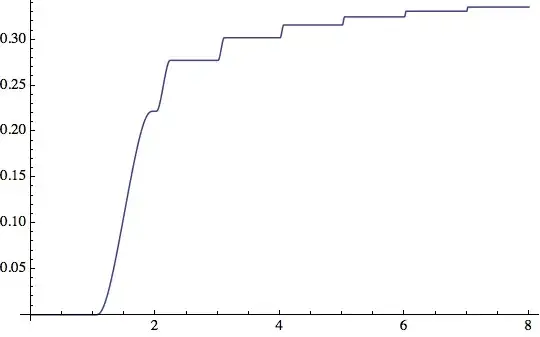Let $f:[0,\infty)\to\mathbb{R}$ be a real valued monotonic increasing function that is twice differentiable on $(0,\infty)$. Is it always true that $\exists y\in\mathbb{R}$ such that $\forall x>y$ we have $f''(x)\leq 0$ whenever $\lim\sup_{x\to\infty} f(x)<\infty$?
My attempt: If we assume $\lim\sup_{x\to\infty} f(x)<\infty$ then $\exists \alpha\in\mathbb{R}$ and $x_0\in\mathbb{R}$ such that $f(x)\leq \alpha$ for all $x\geq x_0$. On the other hand if we fail to have some $y\in\mathbb{R}$ such that for all $x\geq y$ we have $f''(x)\leq 0$ then we must necessarily have that for any $y\in\mathbb{R}$ there exists open intervals $(y-\varepsilon,y+\varepsilon)$ where $f''(x)>0$ for all $x\in(y-\varepsilon,y+\varepsilon)$. Then we get that $$f(x)>f'(y)(x-y)+f(y)\hspace{0.3cm}\forall x\in[y,y+\varepsilon)$$ If $\varepsilon\equiv \infty$ then $f(x)\to\infty$ as $x\to\infty$ violating the boundedness. If $\varepsilon<\infty$ then we must necessarily have consecutive intervals where $f$ is concave up followed by intervals where it is concave down such that it still is monotonic increasing function. It seems that again it should violate the boundedness but I am not sure about it. Would the violation again occur? How could we formally verify or nullify this claim?
